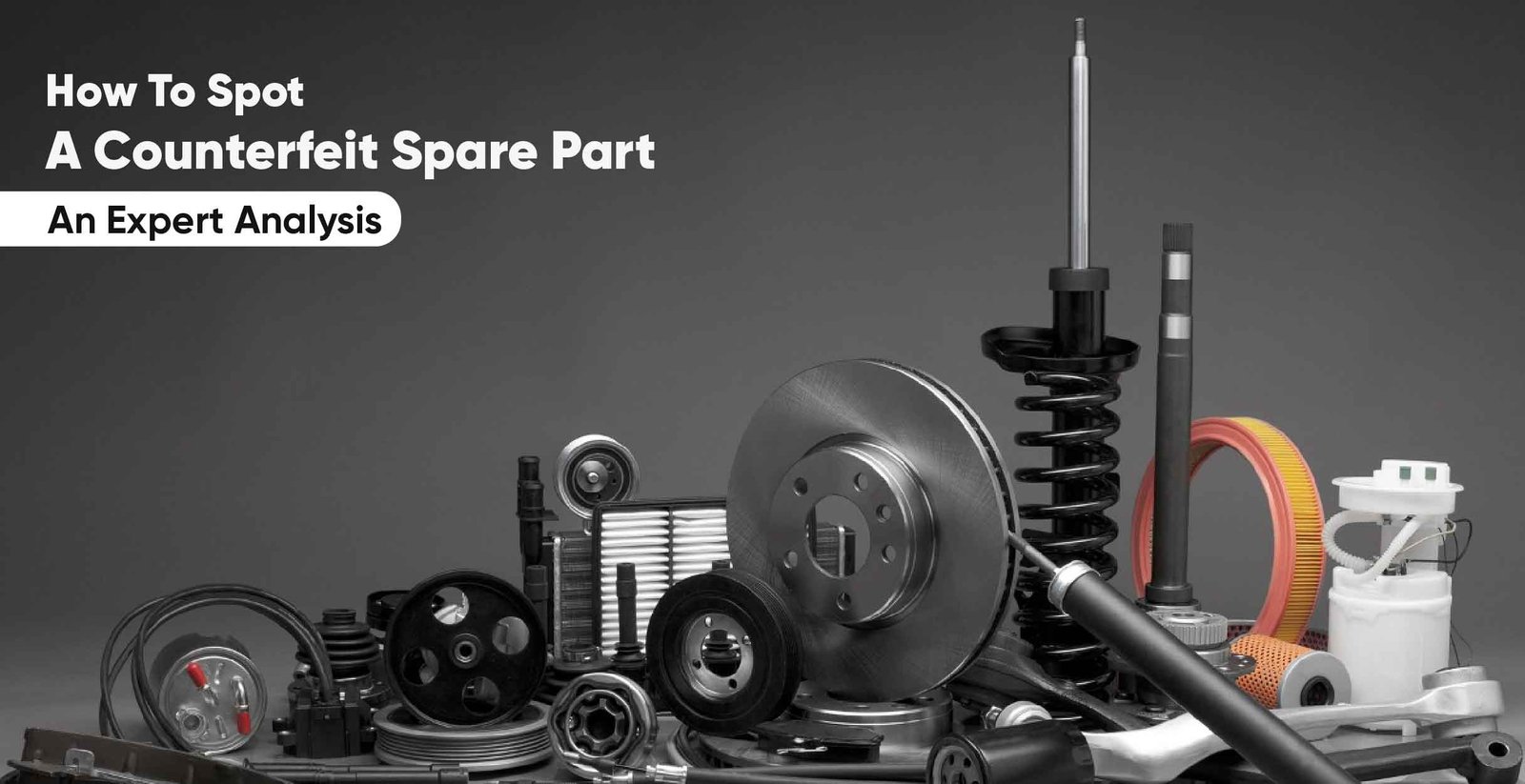Introduction to Vehicle Performance
Vehicle performance refers to how well a car operates in terms of speed, handling, and overall efficiency.
This encompasses various aspects, including the engine’s power output, the suspension’s ability to absorb bumps, and the braking system’s responsiveness.
Enhancing vehicle performance is crucial for those who seek a more exhilarating driving experience or who require a reliable vehicle for rigorous tasks.
One significant way to achieve this improvement is through the strategic upgrade of auto parts.
Upgrading vehicle components can lead to noticeable enhancements in driving dynamics.
For instance, replacing an ordinary exhaust system with a performance variant can optimize engine breathing, resulting in increased horsepower and torque.
Likewise, utilizing high-performance brake pads can significantly shorten stopping distances, thus improving safety and control.
These modifications not only improve performance metrics but also contribute to a car’s longevity by reducing strain on existing parts.
Furthermore, certain upgrades can enhance fuel efficiency, translating to better mileage and cost savings over time.
For individuals looking to export from India, investing in quality auto parts is an essential step, as these components can offer significant advantages in performance and reliability.
These improvements are not limited to sports vehicles; everyday cars can also benefit from thoughtful enhancements, making them more enjoyable and efficient to drive.
In addition to driving performance, upgraded parts can lead to increased vehicle resale value. Prospective buyers often look for enhanced performance specifications, making vehicles with quality upgrades appealing in the marketplace.
This section aims to underline the importance of recognizing the potential benefits of upgrading auto parts, paving the way for a more comprehensive exploration of specific components to improve vehicle performance effectively.
High-Performance Air Intake Systems
Upgrading to a high-performance air intake system is one of the most effective modifications vehicle owners can make to enhance overall performance.
This specialized system is designed to enable more air to flow into the engine compared to standard factory-installed intakes.
Increased air intake leads to improved combustion efficiency, resulting in significant gains in horsepower and torque.
When considering an upgrade, it is important to look for certain key features that can influence performance.
First, a well-designed filter is essential; options that offer high filtration efficiency with minimal airflow restriction are ideal.
Additionally, look for intake systems with smooth, mandrel-bent tubing, as these components facilitate better airflow compared to stock alternatives.
Some high-performance systems are also equipped with larger throttle bodies to accommodate the increased airflow, which can further contribute to performance enhancements.
The potential gains from upgrading the air intake are substantial.
Many vehicle owners report an improvement in horsepower and torque, with typical gains ranging anywhere from 10 to 25 additional horsepower, depending on the vehicle make and model.
Additionally, a performance air intake can enhance throttle response, providing a more engaging driving experience.
Moreover, the upgrade can potentially improve fuel efficiency, as a more efficient combustion process can lead to better utilization of fuel.
This can be particularly beneficial for drivers looking to reduce their overall fuel expenses.
Installation of a high-performance air intake system is generally straightforward.
Many kits come with detailed instructions, and basic mechanical skills are often sufficient to complete the installation.
It is recommended to review the specific requirements for your vehicle model before proceeding.
In conclusion, upgrading to a high-performance air intake system is a valuable investment for any vehicle owner looking to achieve better performance, efficiency, and driving enjoyment.
Upgraded Exhaust Systems
Upgrading the exhaust system of a vehicle can significantly influence its overall performance.
A less restrictive exhaust system allows for better exhaust flow, which can lead to enhanced horsepower and torque.
When considering an upgrade, it is essential to understand the types of exhaust systems available and their respective benefits.
The two primary types of exhaust systems are cat-back and header-back systems.
A cat-back exhaust system replaces the components from the catalytic converter to the rear of the vehicle, while a header-back system includes an upgrade of the headers as well, offering a more comprehensive overhaul of the exhaust pathway.
Both systems facilitate improved exhaust flow; however, header-back systems may deliver more noticeable performance gains due to their extensive modifications.
One of the most significant advantages of an upgraded exhaust system is the increased engine efficiency.
By reducing back pressure, the engine can expel exhaust gases more effectively, which in turn enables it to draw in fresh air more readily.
This improved airflow contributes to a notable increase in power output.
Additionally, many aftermarket exhaust systems provide a distinctive sound that enhances the driving experience, making the vehicle feel sportier and more engaging.
When considering an upgrade, it is crucial to select a system that matches the specific requirements of your vehicle to avoid adverse effects on legality or emissions.
Installation of an upgraded exhaust system can range from straightforward to complex, depending on the vehicle’s make and model.
It is advisable to consult with a professional mechanic or exhaust specialist to ensure proper installation and avoid potential issues.
This improvement not only enhances the vehicle’s performance but can also be an attractive enhancement for car enthusiasts looking to showcase their modified vehicles.
Overall, an upgraded exhaust system represents a valuable investment for those seeking to increase their vehicle’s output and driving pleasure.
Performance Chips and Tuners
Performance chips and tuners have gained popularity among automotive enthusiasts seeking to enhance vehicle performance.
These devices allow users to reprogram the engine’s computer, enabling it to operate at its full potential.
By optimizing air-fuel ratios, ignition timing, and various other performance parameters, performance chips can lead to significant improvements in both efficiency and power.
The ability to fine-tune these settings means that drivers can tailor their vehicle’s performance characteristics to suit specific driving conditions or personal preferences.
One notable advantage of performance chips is that they can enhance fuel efficiency.
By recalibrating the engine’s settings, it is possible to achieve better combustion, which optimizes fuel usage and can lead to cost savings at the pump.
Furthermore, increased power output can result in quicker acceleration and improved responsiveness, factors that many drivers find appealing.
The enhancement in power can also be beneficial for those who use their vehicles for towing or carrying heavier loads, making them more capable and versatile.
However, there are considerations that vehicle owners must take into account before installing performance chips.
One potential concern is the impact on factory warranties. Many manufacturers specify that modifying the engine’s computer may void certain warranties, leading to potential issues in case of subsequent repairs or claims.
It is advisable for vehicle owners to consult their warranty documents or speak with their dealer to understand the implications of such modifications fully.
Compatibility is another crucial factor when considering performance chips.
Not all chips will work seamlessly with every make or model of vehicle.
It is important to select performance chips that are specifically designed for your vehicle’s engine and system, ensuring optimal tuning and performance outcomes.
In conclusion, while performance chips and tuners can provide substantial benefits to vehicle efficiency and power, careful consideration regarding warranty implications and compatibility is essential for prospective users.
Suspension Upgrades for Better Handling
Upgrading a vehicle’s suspension system is a critical step for enhancing overall handling and stability.
The suspension serves an essential role in a vehicle’s performance, as it connects the car’s body to its wheels and is responsible for absorbing shocks from the road, maintaining tire contact, and ensuring proper weight distribution.
By investing in suspension upgrades, drivers can significantly improve cornering ability and ride quality. This is particularly important for enthusiasts who often engage in performance driving.
One of the most effective suspension upgrades is the installation of performance shocks and struts.
These components are designed to absorb impacts more efficiently than factory-installed options.
They help in maintaining tire contact with the road, thus enhancing grip and stability during high-speed maneuvers.
Performance shocks are engineered to minimize body roll, allowing drivers to navigate turns with greater confidence.
Additionally, they contribute to a smoother driving experience, reducing the bouncing and swaying often felt in standard vehicles.
Sway bars, also known as anti-roll bars, are another essential upgrade that can greatly improve vehicle handling.
By connecting the left and right wheels, sway bars reduce the amount of body roll experienced during cornering.
This increase in rigidity helps maintain a level vehicle stance, ultimately leading to better traction and control.
Different widths and stiffness levels of sway bars are available, allowing drivers to customize their vehicle’s handling characteristics to suit their driving style or specific performance needs.
Other suspension upgrades, such as coilovers and air suspension systems, offer further options for drivers looking to enhance handling.
Coilovers allow for adjustable ride height and damping characteristics, giving owners greater control over their vehicle’s stance and performance.
Air suspension systems provide the versatility of adjusting ride height based on driving conditions, ensuring optimal performance on various terrains.
By carefully selecting and investing in these suspension upgrades, vehicle owners can experience a marked improvement in handling, stability, and overall driving enjoyment.
Upgrading Tires and Wheels
The performance of a vehicle is significantly influenced by its tires and wheels, which serve as the primary contact point with the road.
Upgrading to high-performance tires can dramatically enhance a vehicle’s grip and handling characteristics, thereby improving the overall driving experience.
Such enhancements are particularly noticeable in challenging conditions, such as wet or uneven terrains, where the right tires can offer superior traction and stability.
High-performance tires are designed with specific tread patterns and rubber compounds that optimize grip, allowing for better acceleration and braking.
These tires also provide improved responsiveness during cornering, which is crucial for both safety and driving enjoyment.
For enthusiasts and everyday drivers alike, investing in quality tires can lead to a noticeable difference in how the vehicle behaves under various driving conditions.
Moreover, the material and size of the wheels play a crucial role in determining performance.
Lightweight alloy wheels, for instance, reduce unsprung weight, enhancing suspension efficiency and, subsequently, the vehicle’s handling.
Additionally, larger diameter wheels can improve cornering stability and aesthetics but may require related adjustments such as recalibrating the speedometer or modifying the wheel wells to prevent rubbing on the chassis.
The choice of tires and wheels should always align with the vehicle’s purpose and the driving conditions it will encounter.
For example, those in regions with harsh winters may benefit from all-season or winter tires, while performance-oriented drivers may prefer summer tires for optimal handling.
A well-considered upgrade of tires and wheels not only improves performance but also contributes significantly to vehicle safety, making it a crucial aspect for any vehicle owner looking to enhance their driving experience.
Consideration Factors Before Upgrading
Upgrading auto parts can significantly enhance vehicle performance and aesthetics; however, several crucial factors should be assessed before proceeding.
The first consideration is the budget allocated for the upgrades.
Vehicle modifications can vary greatly in cost, with some enhancements being relatively inexpensive while others may require a substantial investment.
Establishing a clear budget helps in selecting parts that provide the best value while ensuring financial feasibility.
Another critical aspect is the compatibility of the new parts with the existing systems of the vehicle.
Each car model has specific specifications, and it is essential to ensure that any new components work seamlessly with current systems.
For instance, performance upgrades such as a new exhaust system or turbocharger must be compatible with the engine to avoid issues like power loss or increased wear.
The purpose of the upgrade also plays a significant role in the decision-making process.
Determine whether the aim is to enhance performance, such as improving speed or handling, or if aesthetic improvements are the priority, like new rims or custom paint.
Understanding the primary motivation will guide the choice of parts and lead to more satisfactory outcomes.
Moreover, it is imperative to familiarize oneself with local regulations governing vehicle modifications.
Different regions may impose restrictions on certain upgrades, especially those that affect emissions or safety standards.
As a result, checking with local authorities or consulting automotive professionals can prevent future legal issues or the need to undo modifications that do not meet compliance.
By considering these factors—budget, compatibility, purpose, and regulations—drivers can make informed decisions regarding upgrading their vehicle, ultimately leading to enhanced performance and satisfaction.
Potential Risks of Upgrading Auto Parts
While upgrading auto parts can lead to enhanced vehicle performance, it is essential to consider the potential risks associated with such modifications.
One of the most considerable downsides is the possibility of voiding your vehicle’s warranty.
Many manufacturers establish specific guidelines for modifications, and deviations from these can eliminate any warranty support.
For instance, if an upgraded exhaust system results in engine issues, the manufacturer may refuse to cover repairs, leaving the vehicle owner to bear the financial burden.
Another significant concern when engaging in upgrades is the potential decrease in vehicle reliability.
Aftermarket components may not be subjected to the same rigorous testing as OEM (original equipment manufacturer) parts.
A poorly designed or incompatible part can lead to system failures or compromised safety.
For example, a driver who replaced their brakes with aftermarket options that do not meet quality standards might experience brake failure, leading to dangerous road situations.
Furthermore, the importance of professional installation cannot be overstated.
Many auto parts upgrades require specialized knowledge and tools for proper installation.
Inadequate installation can further exacerbate reliability issues and lead to performance problems.
For instance, an individual who attempts to install a high-performance ignition system without the necessary expertise may encounter significant misfires or inefficient fuel consumption, undermining the benefits of the upgrade.
It is advisable to seek out certified mechanics to ensure that upgrades are implemented correctly, safeguarding against potential mishaps.
In conclusion, while upgrading auto parts can improve performance, understanding the associated risks is vital.
From warranty voiding to reliability issues and the significance of professional installation, a thoughtful approach is necessary to mitigate these concerns and make informed decisions that enhance vehicle performance safely.
Expert Recommendations on Auto Parts Upgrades
When it comes to enhancing vehicle performance, auto parts upgrades are essential for both novice and experienced car enthusiasts.
Automotive experts emphasize the significance of selecting high-quality components that not only improve efficiency but also contribute to the vehicle’s overall longevity.
Several modifications can be particularly effective, and numerous reputable brands offer options that cater to a variety of needs and budgets.
One highly recommended upgrade is the performance exhaust system.
An aftermarket exhaust can significantly improve airflow, which allows the engine to breathe better and ultimately boosts horsepower and torque.
Brands like Borla and MagnaFlow are widely praised for their durability and performance enhancement capabilities, making them top choices among drivers looking to enhance their vehicles.
Another crucial area for upgrade is the suspension system.
Upgrading to a premium suspension can vastly improve ride quality and handling.
It is advisable to consider brands such as Bilstein and Eibach, known for their exceptional performance and quality.
Drivers who have switched to enhanced suspension systems often report a noticeable difference in cornering stability and driving comfort.
Furthermore, investing in high-performance brake pads and rotors can make a significant safety improvement and enhance stopping power.
Well-regarded manufacturers like Brembo and EBC Brakes are frequently mentioned by automotive experts for their outstanding product performance.
Many case studies highlight the benefits of these upgrades, showcasing improved vehicle control and reduced stopping distances in various driving conditions.
The final recommendation focuses on the vehicle’s engine air intake system.
By improving the intake’s efficiency, drivers can experience an uptick in horsepower and fuel economy.
Popular brands such as K&N and AIRAID offer products that are both effective and reliable.
Enthusiasts who have upgraded their air intake systems consistently report satisfying performance boosts, highlighting the value of such modifications in the broader context of vehicle performance optimization.
Conclusion: Enhancing Your Vehicle’s Performance
In the pursuit of improved vehicle performance, selecting the right auto parts upgrades is crucial.
Enhancements such as high-performance exhaust systems, upgraded air filters, and advanced suspension components can make a significant impact on how a vehicle behaves on the road.
Thoughtful modifications not only enhance performance but can also contribute to greater efficiency and responsiveness, providing drivers with a more engaging driving experience.
Evaluating the available options allows automobile owners to identify upgrades that best align with their specific driving style and performance objectives.
Every vehicle presents unique opportunities for improvement.
For instance, integrating premium quality brake components can enhance safety and handling capabilities.
Similarly, tuning the engine control unit or ECU can unlock additional power while improving fuel economy.
As such, it is imperative for vehicle owners to consider their priorities—whether they are focused on performance, aesthetics, or a combination of both—as they explore modifications.
Furthermore, leveraging the benefits of quality auto parts can extend beyond basic enhancement.
By investing in durable and reliable components, drivers can ensure their vehicles not only perform better but also last longer, ultimately translating to greater value.
While the initial cost of upgrades may seem considerable, the long-term advantages in terms of maintenance savings and performance enhancements often justify the expense.
As the automotive landscape continues to evolve, staying informed on the latest technologies and innovations will empower consumers to make more educated decisions regarding modifications.
By actively assessing their vehicles and contemplating future upgrades, drivers can effectively tailor their vehicles to meet their aspirations.
Embracing such improvements fosters a lasting connection between driver and machine, ensuring a memorable and pleasurable driving experience.










